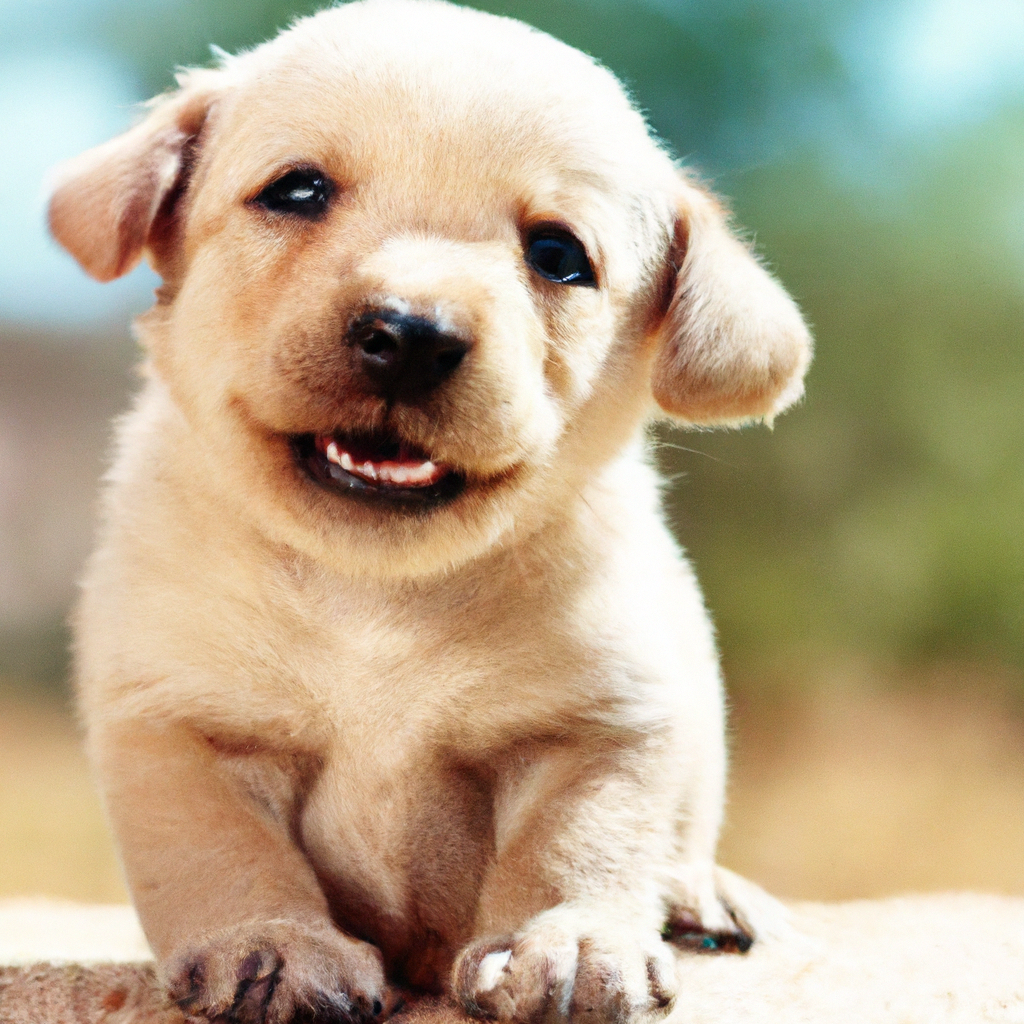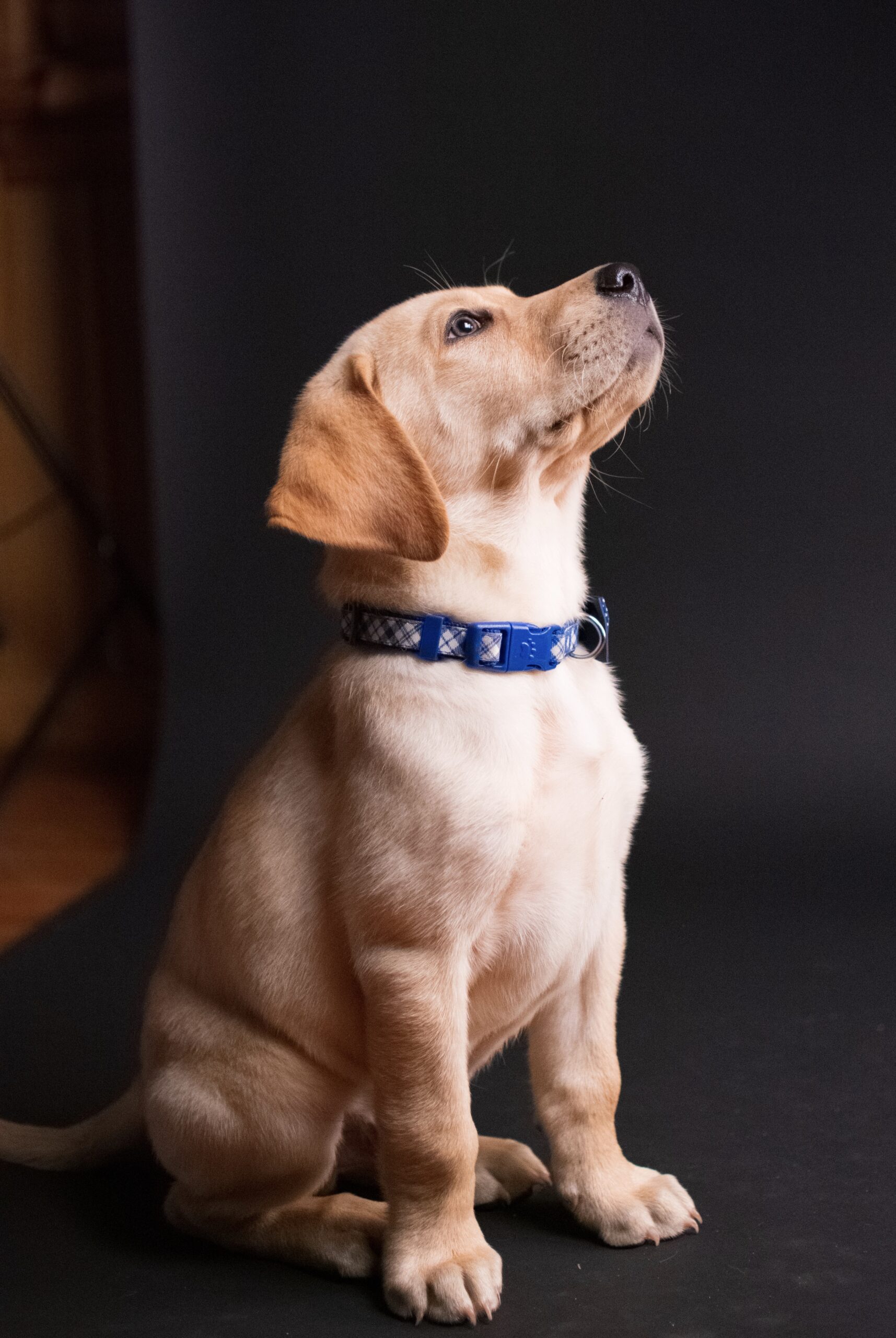So, you’ve just brought home a new bundle of joy in the form of a fluffy, adorable puppy. Congratulations! Now, you’re probably wondering what the best way is to train your new furry friend. Well, fear not, because in this article, we’re going to discuss just that. From building a strong foundation of positive reinforcement to establishing a consistent routine, we’ll explore the top tips and techniques that will have your puppy wagging their tail in no time. So, let’s get started on this exciting journey of puppy training together!
Establishing a Routine
Creating a Schedule
When it comes to training a new puppy, establishing a routine is crucial. Dogs thrive on routine and structure, and this will help them feel secure in their environment. Start by creating a schedule that includes specific times for meals, walks, playtime, and training sessions. This will not only make your life easier but also help your puppy understand what is expected of them. Consistency is the key here, so try to stick to the schedule as closely as possible.
Feeding Time
Feeding time is an important aspect of your puppy’s routine. It is recommended to feed your puppy at set times throughout the day rather than leaving food out all the time. This will help regulate their bowel movements and make it easier for you to determine when they need to go outside. When feeding your puppy, it is important to use a high-quality puppy food that is appropriate for their age and breed. Be sure to follow the feeding guidelines on the back of the food bag to ensure you are giving your puppy the proper amount of food.
Potty Training
Potty training is one of the first and most important training tasks you will undertake with your new puppy. The key to successful potty training is consistency, patience, and positive reinforcement. Take your puppy outside to their designated potty area regularly, especially after meals, naps, and playtime. When they eliminate in the appropriate spot, praise them enthusiastically and reward them with a treat. If accidents happen inside the house, never punish your puppy; instead, redirect them to the appropriate area and clean up the mess with an enzymatic cleaner to eliminate the scent.
Socialization
Introducing to People
Socializing your puppy to different people is essential for their overall development and future behavior. Start by introducing your puppy to family and close friends, and gradually expose them to new people in various environments. Encourage people to approach your puppy calmly and gently, allowing them to sniff and interact at their own pace. Positive experiences with people during their early months will help your puppy grow into a confident and well-adjusted adult dog.
Exposing to Environments
In addition to meeting different people, it is important to expose your puppy to various environments. This includes walks in the neighborhood, trips to the park, car rides, and encounters with different sounds and sights. Gradually introduce these stimuli to your puppy, ensuring that they feel safe and comfortable. By exposing your puppy to different environments from an early age, you will help them develop resilience and reduce the likelihood of fear or anxiety-based behavior problems later on.
Interacting with Other Animals
Socializing your puppy with other animals is crucial for their social skills and overall well-being. Start by arranging controlled playdates with other puppies or friendly adult dogs who are up to date on their vaccinations. Pay close attention to their interactions and intervene if necessary to ensure positive experiences. It is important to expose your puppy to a variety of animals, including cats, birds, and small animals, in order to promote good behavior and minimize aggression or fear towards other species.
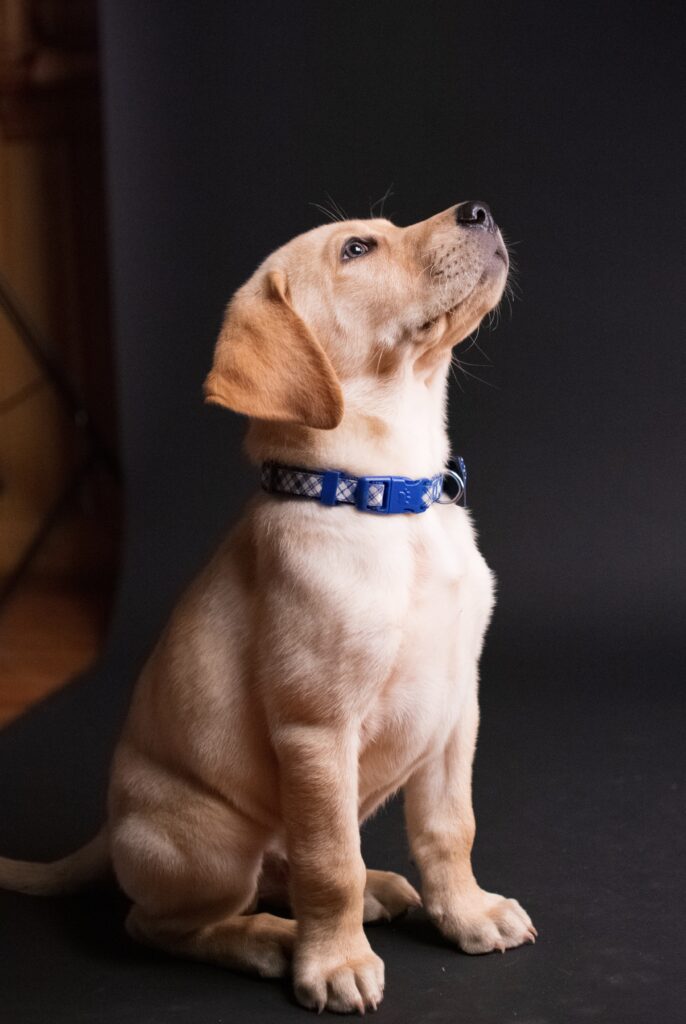
Basic Commands
Sit
Teaching your puppy to sit is one of the most basic and fundamental commands. Begin by holding a treat close to their nose, and then slowly move it upwards towards their forehead. As their head follows the treat, their bottom will naturally lower into a sitting position. Once they are in a seated position, say the cue word “sit” and provide them with the treat and verbal praise. Repeat this process several times a day, gradually fading out the treat and relying solely on verbal praise.
Stay
The “stay” command is crucial for keeping your puppy safe in various situations. Start by asking your puppy to sit, and then hold out your hand in a stop gesture while saying “stay.” Take a step back and wait for a few seconds before returning to your puppy and rewarding them with a treat and verbal praise. Gradually increase the duration of the stay, always returning to your puppy to reward them before releasing them from the command. Remember to use a release word, such as “okay,” to let them know they are free to move.
Down
Teaching your puppy to lie down on command is another important skill. Start with your puppy in a sitting position, hold a treat in your closed hand, and lower it to the ground in front of them. As they follow the treat with their nose, their body will naturally lower into a lying down position. Once they are down, say the cue word “down” and reward them with the treat and verbal praise. Practice this command regularly, gradually fading out the treat and using only verbal praise.
Come
The “come” command is vital for your puppy’s safety and for maintaining control in various situations. Start in a controlled and distraction-free environment. Crouch down and open your arms wide, calling your puppy’s name followed by the cue word “come.” Use an excited and happy tone of voice to encourage them to come to you. When your puppy reaches you, reward them with a treat and verbal praise. Gradually increase the distance and add distractions as your puppy becomes more proficient at this command.
Positive Reinforcement
Using Treats
Positive reinforcement is a highly effective training method that relies on rewarding desired behaviors. Treats are often the most commonly used reward. Choose small, soft, and tasty treats that your puppy loves and use them as a motivation during training sessions. When your puppy performs the desired behavior, mark it with a clicker or a specific word such as “yes,” and immediately offer them a treat. This will help your puppy associate the behavior with the reward, making them more likely to repeat it in the future.
Verbal Praise
In addition to treats, verbal praise is an essential part of positive reinforcement training. Dogs thrive on praise and love to hear their owners’ happy voices. Whenever your puppy performs a desired behavior, immediately praise them with an enthusiastic “good boy” or “good girl” and shower them with affectionate words. The tone of your voice is important here, as a happy and excited tone will reinforce their positive behavior. Remember, dogs want to please their owners, and positive verbal praise is a powerful motivator.
Clicker Training
Clicker training is a popular and effective method of positive reinforcement. It involves using a small handheld device called a clicker that emits a distinct clicking sound. The clicker serves as a marker, indicating to your puppy that they have performed the desired behavior. To use this method, start by associating the clicker with treats. Click the device, then immediately offer your puppy a treat. Repeat this process several times until your puppy understands that the click sound means a reward is coming. Once your puppy has made this association, you can use the clicker to mark and reinforce desired behaviors.
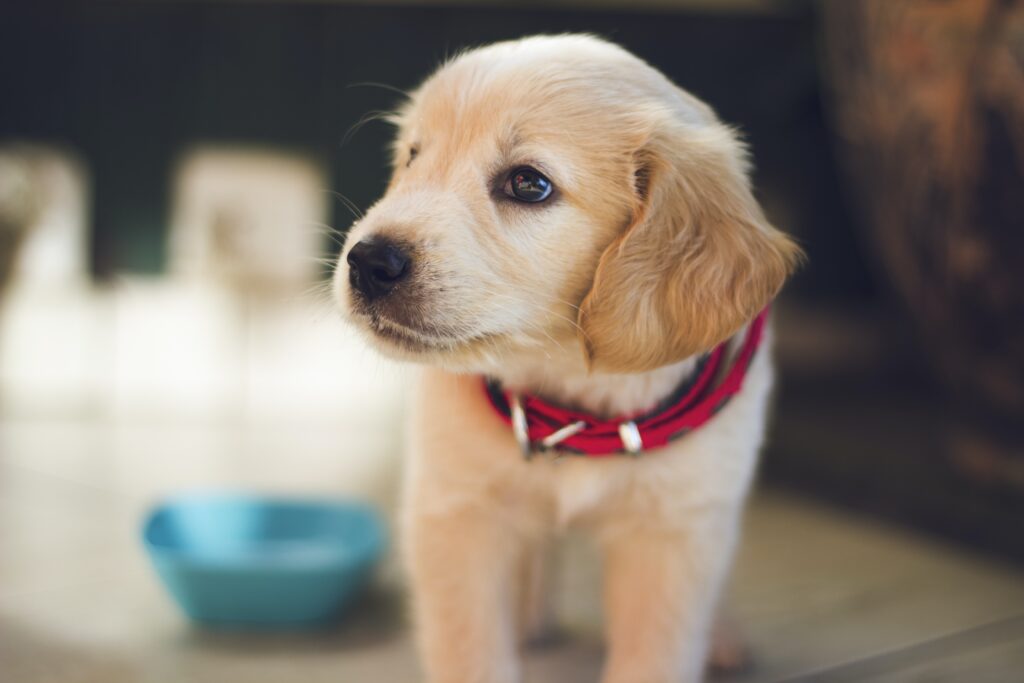
Crate Training
Choosing the Right Crate
Crate training is a valuable tool for both housetraining and providing a safe space for your puppy. When choosing a crate, make sure it is of appropriate size, allowing your puppy to stand, turn around, and lie down comfortably. It is important to choose a crate made of sturdy and durable materials, with proper ventilation and secure latches. Additionally, consider using a crate with a removable divider, which can be adjusted as your puppy grows.
Introducing the Crate
Introducing your puppy to the crate should be a positive and gradual process. Place the crate in a central and easily accessible area of your home. Leave the door open and encourage your puppy to explore the crate at their own pace. You can make the crate more inviting by placing soft bedding and some toys or chew treats inside. Never force your puppy into the crate; instead, use positive reinforcement to encourage them to go inside on their own.
Crate Training Steps
To crate train your puppy, start by getting them comfortable with being inside the crate for short periods of time. Begin by enticing them with treats or toys and gradually increase the duration they spend inside. Close the door for brief periods while you are present, gradually extending the time as your puppy becomes more comfortable. It is important to remember that the crate should never be used as a form of punishment. Always make it a positive and safe place for your puppy, and never leave them crated for extended periods of time.
Leash Training
Getting the Right Equipment
Leash training is an important skill for both you and your puppy. Before starting leash training, make sure you have the right equipment. Choose a sturdy, well-fitting leash and attach it to a properly fitting collar or harness. The leash should be long enough to allow your puppy some freedom to explore, but not so long that they can get tangled or wander too far.
Introduction to a Leash
Introduce your puppy to the leash by allowing them to sniff and investigate it. Attach the leash to their collar or harness while you are indoors and let them walk around with it. Gradually add slight tension to the leash and encourage your puppy to follow you. Reward them with treats and praise for walking calmly on the leash.
Walking on a Leash
Once your puppy is comfortable wearing the leash, it is time to start leash training outside. Begin in a quiet area with minimal distractions. Encourage your puppy to follow you, using treats and verbal praise to reward them for good behavior. If your puppy pulls on the leash, stop walking and wait until they return to your side before continuing. Consistency is key when leash training, so be patient and persistent. Gradually increase the duration and difficulty of your walks as your puppy becomes more proficient.
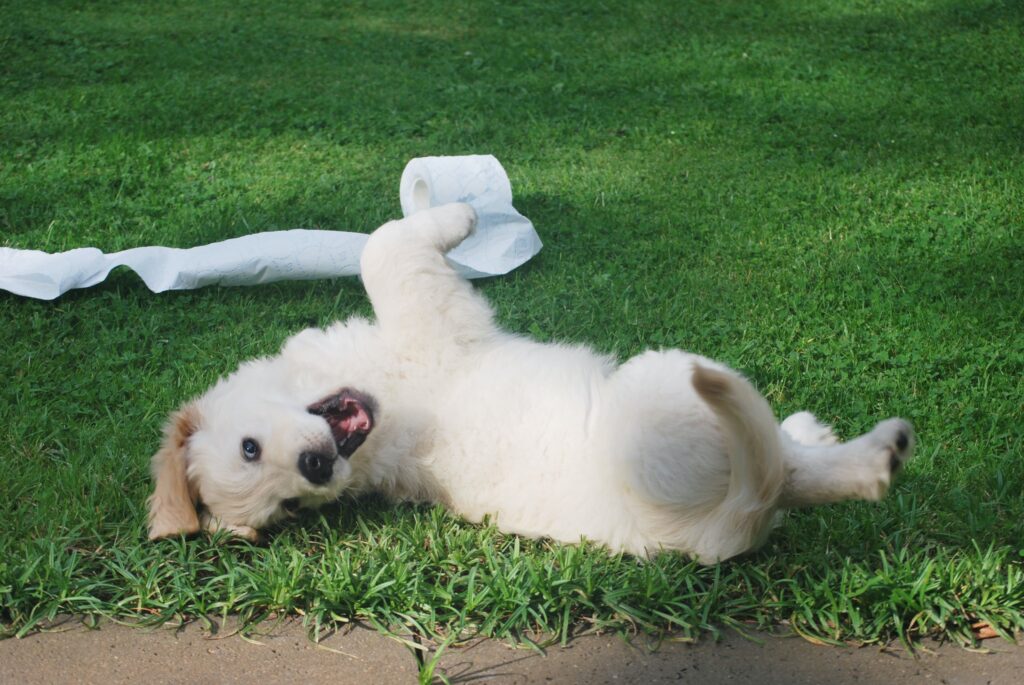
Chewing and Biting
Redirecting Behavior
Chewing and biting are natural behaviors for puppies, but it is important to redirect these behaviors onto appropriate chew toys. Provide your puppy with a variety of toys specifically designed for teething and chewing. Whenever you catch your puppy chewing on something they shouldn’t, calmly redirect them to an appropriate toy and praise them when they engage with it. This will help establish boundaries and encourage proper chewing behavior.
Teaching Bite Inhibition
Puppies have sharp teeth and a natural inclination to nip during play. It is important to teach them bite inhibition, which involves teaching them to control the force of their bite. When your puppy nips or bites too hard during play, let out a high-pitched yelp to indicate pain and immediately stop playtime. This mimics the way other puppies communicate during play, and your puppy will learn that biting too hard ends the fun. After a short break, resume play with your puppy using gentler and more controlled interactions.
Providing Appropriate Chew Toys
Providing your puppy with appropriate chew toys is essential for their dental health and mental stimulation. Look for toys that are specifically designed for teething puppies, such as rubber or nylon chew toys. Avoid toys that can be easily torn apart or pose a choking hazard. Rotate the toys regularly to keep your puppy engaged and prevent boredom. Supervise your puppy when they are chewing to ensure they do not accidentally swallow or damage any parts of the toy.
Preventing Separation Anxiety
Building Independence
Separation anxiety can be a common issue for puppies, especially when they are first introduced to a new home. To prevent separation anxiety, gradually build up your puppy’s independence by leaving them alone for short periods of time. Begin by leaving the room for just a few minutes and gradually increase the duration over time. Make sure to provide your puppy with a safe and comfortable space, such as a crate or a designated area with their bed and toys.
Gradual Alone Time
When leaving your puppy alone, make it a positive experience by providing them with a special toy or treat that they only have access to when you are away. This will help redirect their attention and keep them occupied. Start with short periods of alone time and gradually increase it as your puppy becomes more comfortable. Remember to always return in a calm and low-key manner, avoiding any excessive excitement that may increase anxiety.
Positive Departure and Arrival
When leaving and returning home, it is important to maintain a calm and positive demeanor. Avoid making a big fuss when you leave or come home, as this can increase your puppy’s anxiety and reinforce their clingy behavior. Instead, practice entering and exiting the house quietly and without fanfare. By maintaining a consistent routine and downplaying departures and arrivals, you will help your puppy feel more secure and reduce the likelihood of separation anxiety.
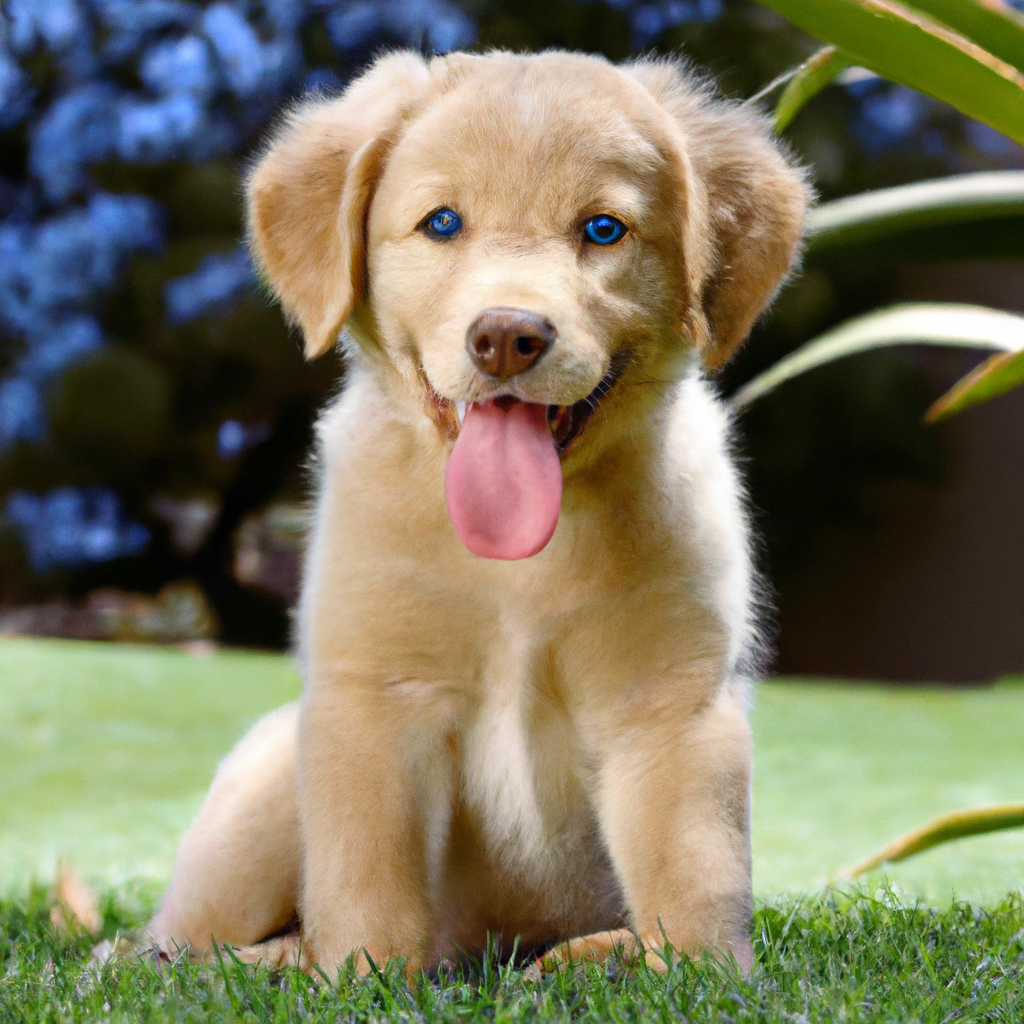
Proper Socializing with Children
Teaching Gentle Interactions
Socializing your puppy with children is crucial for their overall development and future behavior. It is important to teach both your puppy and children how to interact appropriately with each other. Teach children to approach your puppy calmly and gently, avoiding loud noises or sudden movements that may startle them. Show children how to give your puppy space when they seem unsure or uncomfortable. Similarly, teach your puppy to be gentle and tolerant with children by rewarding calm and gentle behavior while providing a safe and supervised environment for interactions.
Supervision
When socializing your puppy with children, it is essential to provide supervision at all times. Both puppies and children can be unpredictable, and accidents can happen despite everyone’s best intentions. Ensure that interactions between your puppy and children are closely monitored to prevent any rough play or inappropriate behavior. With proper supervision, you can ensure that both your puppy and the children are safe and that positive interactions are reinforced.
Setting Boundaries
It is important to establish boundaries between your puppy and children. Teach your children to respect your puppy’s space and to refrain from bothering them while they are eating, sleeping, or using their crate. Similarly, teach your puppy to understand boundaries and to respect their human counterparts. Consistency is key here, as it will ensure that both parties understand the rules and know what is expected of them.
Patience and Consistency
Stay Calm and Patient
Training a new puppy requires patience and a calm state of mind. Remember, puppies are learning and exploring the world around them, and it is normal for them to make mistakes or exhibit undesirable behaviors. It is important to stay calm and patient throughout the training process. Yelling or punishment will only confuse and scare your puppy, which may hinder their progress. Instead, maintain a positive and patient attitude, offering encouragement and support as they learn and grow.
Consistent Training Methods
Consistency is key when it comes to training your puppy. Establish clear rules and boundaries from the beginning and ensure that all family members are on the same page. Consistent training methods and cues will help your puppy understand what is expected of them and ultimately lead to better behavior. Avoid switching between different training methods or cues, as this can cause confusion for your puppy. Stick to one method and be consistent in your approach.
Repetition and Reinforcement
Repetition is an essential part of training a new puppy. Dogs learn through repetition and reinforcement, so it is important to practice commands and behaviors consistently. Set aside regular training sessions each day to reinforce the commands and skills you have taught your puppy. Remember to be patient and reward your puppy for their progress, even if it is small. Repeat the training exercises in different environments and add distractions gradually to ensure that your puppy understands and responds to commands in various situations.
In conclusion, training a new puppy requires time, patience, and consistency. By establishing a routine, socializing your puppy, using positive reinforcement, crate training, leash training, managing chewing and biting, preventing separation anxiety, teaching gentle interactions with children, and maintaining a calm and patient attitude, you are setting your puppy up for success. Remember to always approach training with a friendly and positive tone of voice, as your puppy is looking to you for guidance and support. With dedication and love, you can build a strong bond with your puppy and help them become a well-behaved and happy member of your family.
